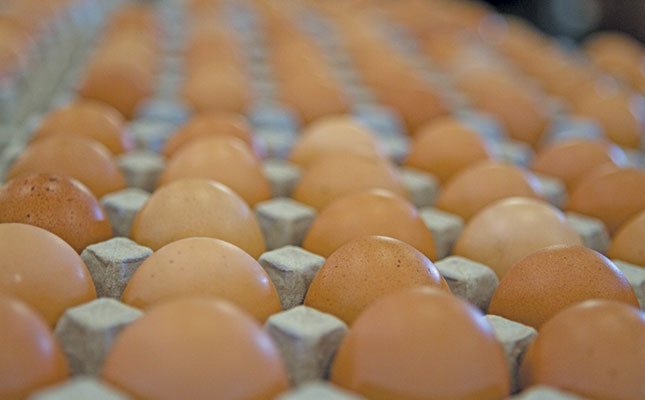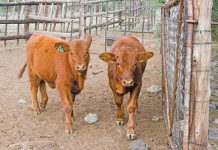
Food prices have soared in recent months, putting huge pressure on household budgets. With this in mind, there is surely no better time than now to start an egg production enterprise. Eggs are a remarkable food: affordable, convenient, delicious and high in protein.
Many communal farming and peri-urban residential areas have some space available where this can be undertaken. While not everyone can afford to buy purebred point-of-lay hens such as Rhode Island Reds, Buff Orpingtons or White Leghorns for between R100 and R150 a bird, many rural households have an existing population of chickens that produce eggs.
I have used such crossbred chickens in the past and they have laid good-quality eggs. You should be able to buy young female chicks for between R10 and R30 each, depending on size, and they will start laying eggs from about 18 weeks of age.
Diminishing productivity
A layer produces about 250 eggs in her first year and will keep laying for about seven years. Keep in mind that she will stop laying for a period each year. This is no cause for concern; she will start laying again. Each year, however, her production drops. From the second year until the seventh, a hen produces 80%, 70%, 60%, 50%, 45% and 35% respectively of her original 250 eggs in year one.
It, therefore, makes sense to replace older layers when they produce few eggs. ‘Retired’ hens can still be sold as slaughter chickens if in good condition and this will add to your income.
Feeding
A hen will struggle to lay a good quantity of decent-size eggs if she doesn’t receive a balanced diet. This should include essential elements, such as calcium and protein, as well as micro-nutrients and trace elements. For this reason, you should use laying mash produced by a reputable animal feed company.
Experts advise that each hen be fed about 100g (about half-a-cup) of laying mash daily. However, free-roaming layers usually have access to other protein-rich food sources such as insects and worms, along with nutritious greens such as plants and grass. So you might be able to decrease the layer mash ration; I have found that even as low as 50g/bird/day can be adequate.
Regardless of how much you feed the hens, do so first thing in the morning before releasing the chickens from their coop. This will enable them to get the maximum benefit from the properly balanced mash before filling up on insects and plants, and will in turn help to increase egg production.
Doing the sums
Let’s look at the economics of producing eggs. A 40kg bag of laying mash costs about R360 (some suppliers may sell it for less), so each 50g fed to a chicken daily will cost you about 45c. Large/jumbo eggs sell for R2 to R2,50 each, so there’s clearly a decent profit to be had. Indeed, free-range eggs may command higher prices than this, and it might pay you to sell your eggs to a business specialising in health foods.
If each egg costs you 45c to produce, and you sell it for R2, you’ll realise a profit of R1,55/egg. If you can build up to 100 laying hens, you’ll earn R155/day or about R4 650/month.
With good management, you could reinvest your profits in the business and slowly increase hen numbers. If you can sell eggs to a health shop at R2,50/egg, your daily profit will increase by R50 and your monthly profit by R1 500.
Consider joining up with other growers to benefit from economies of scale.
Ensure that your hens lay as efficiently as possible by following these guidelines:
*Make sure the chickens have access at all times to clean, fresh water;
*Keep the coop clean, and disinfect it regularly;
*Ensure that it is sealed against wild cats or vermin such as rats;
*Hens instinctively lay their eggs in a safe, quiet space. Encourage them to lay their eggs conveniently in the coop by ensuring it has enough space, and by placing cosy nest boxes in it. Provide a separate area (ideally with perches) for the birds to roost;
*Feed them termites from ant heaps or by keeping cheap solar lights on at night in their sleeping area to attract flying insects. This will increase protein and calcium in their diet.
Sources: M Farooq et al. 2002. ‘Feed consumption and efficiency of feed utilization by egg layers for egg production’. Agricultural University, Peshawar, Pakistan; Biggs, P. ‘How long do chickens lay eggs? Goals for laying hens’. Purina Mills.
Shane Brody is involved in an outreach programme aimed at transferring skills











